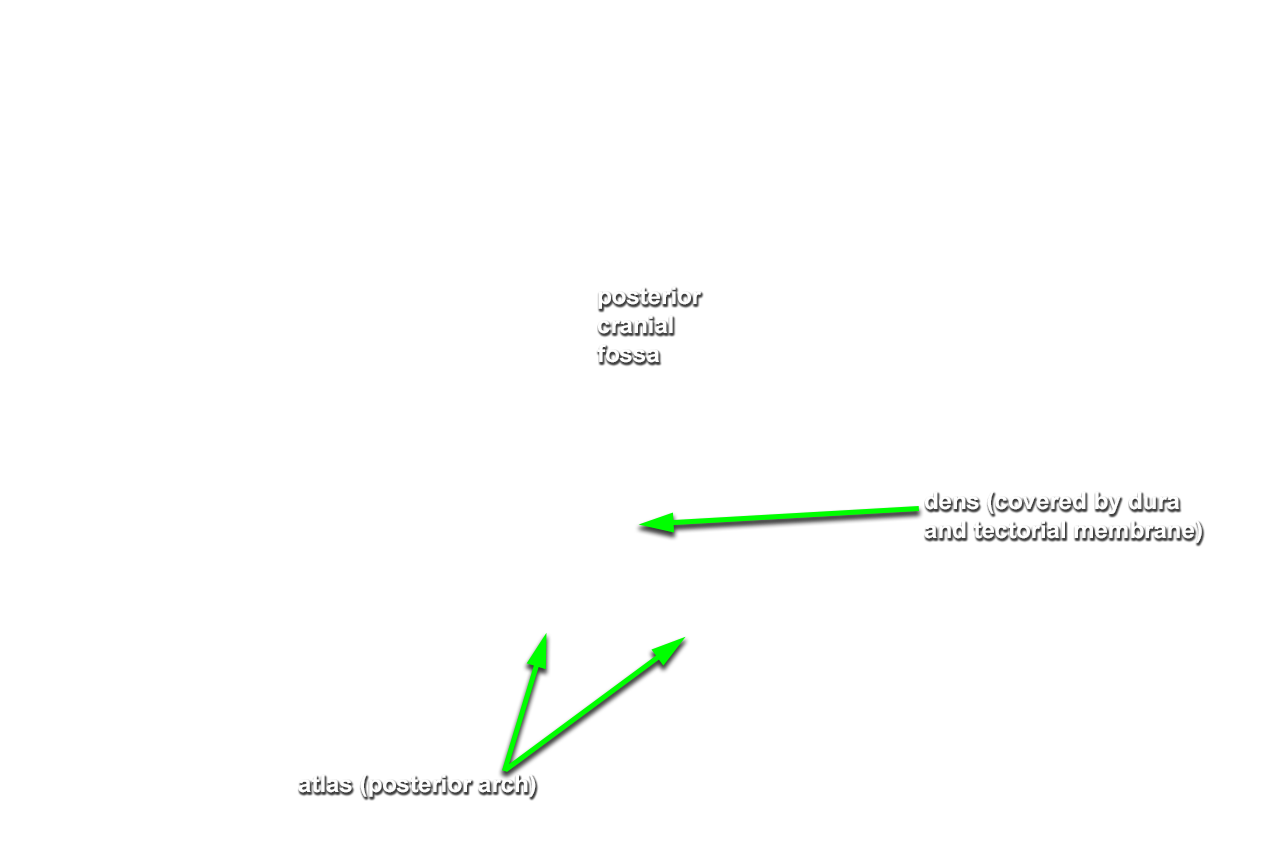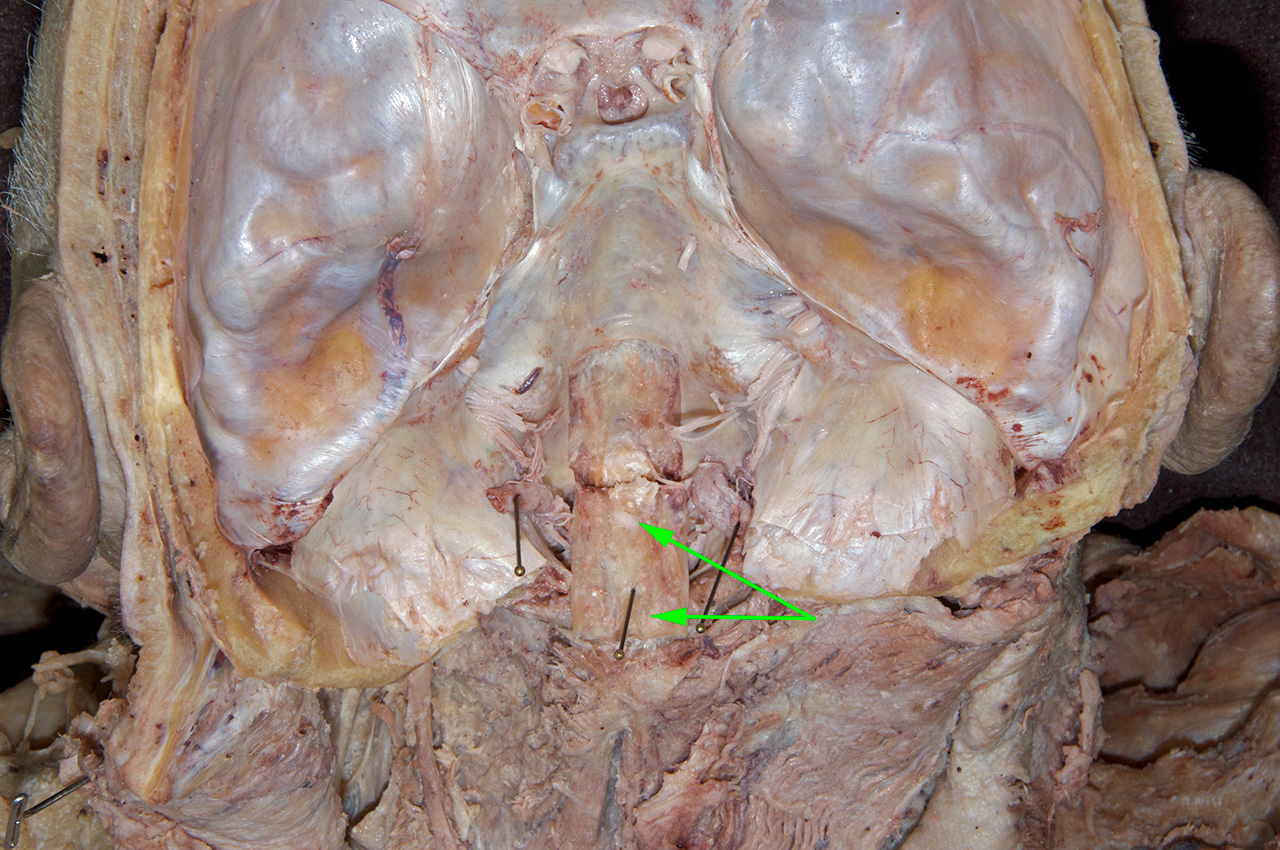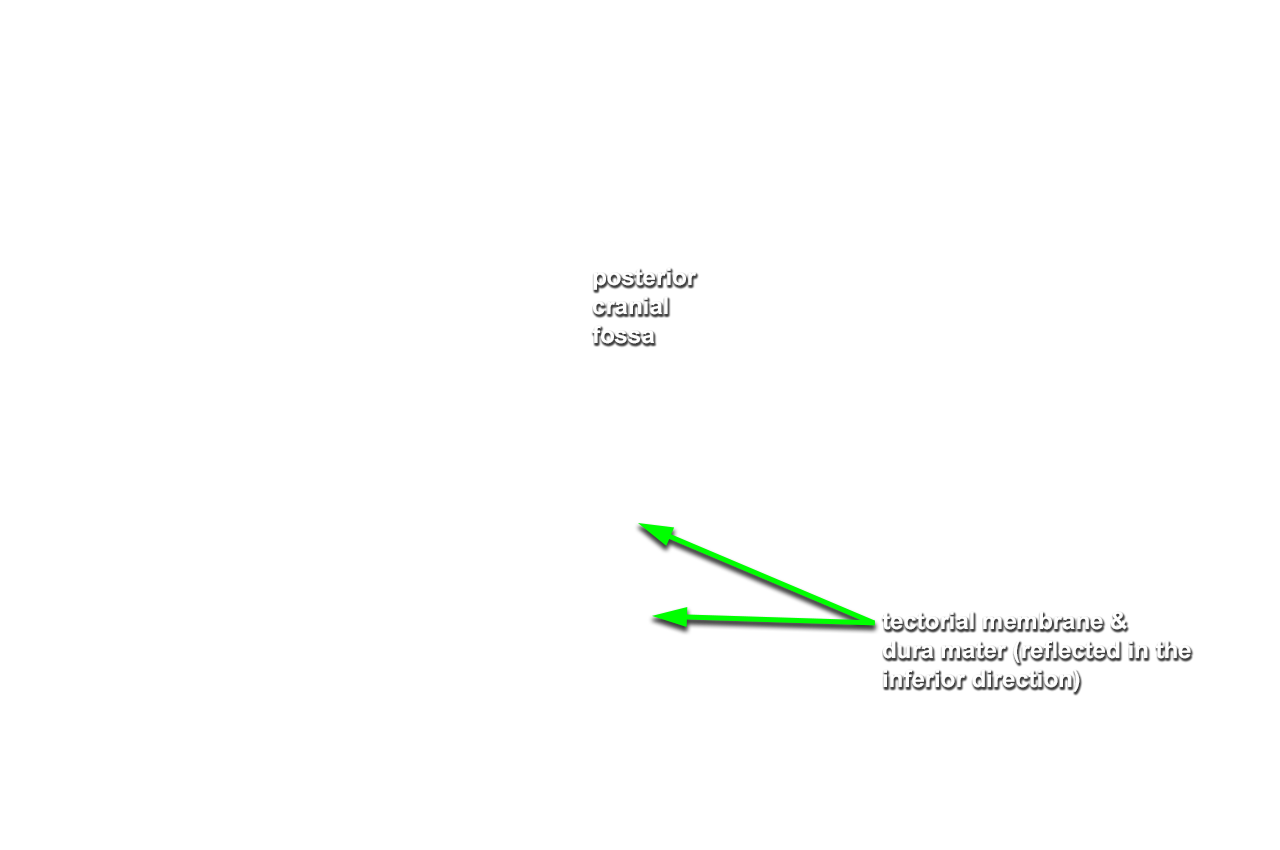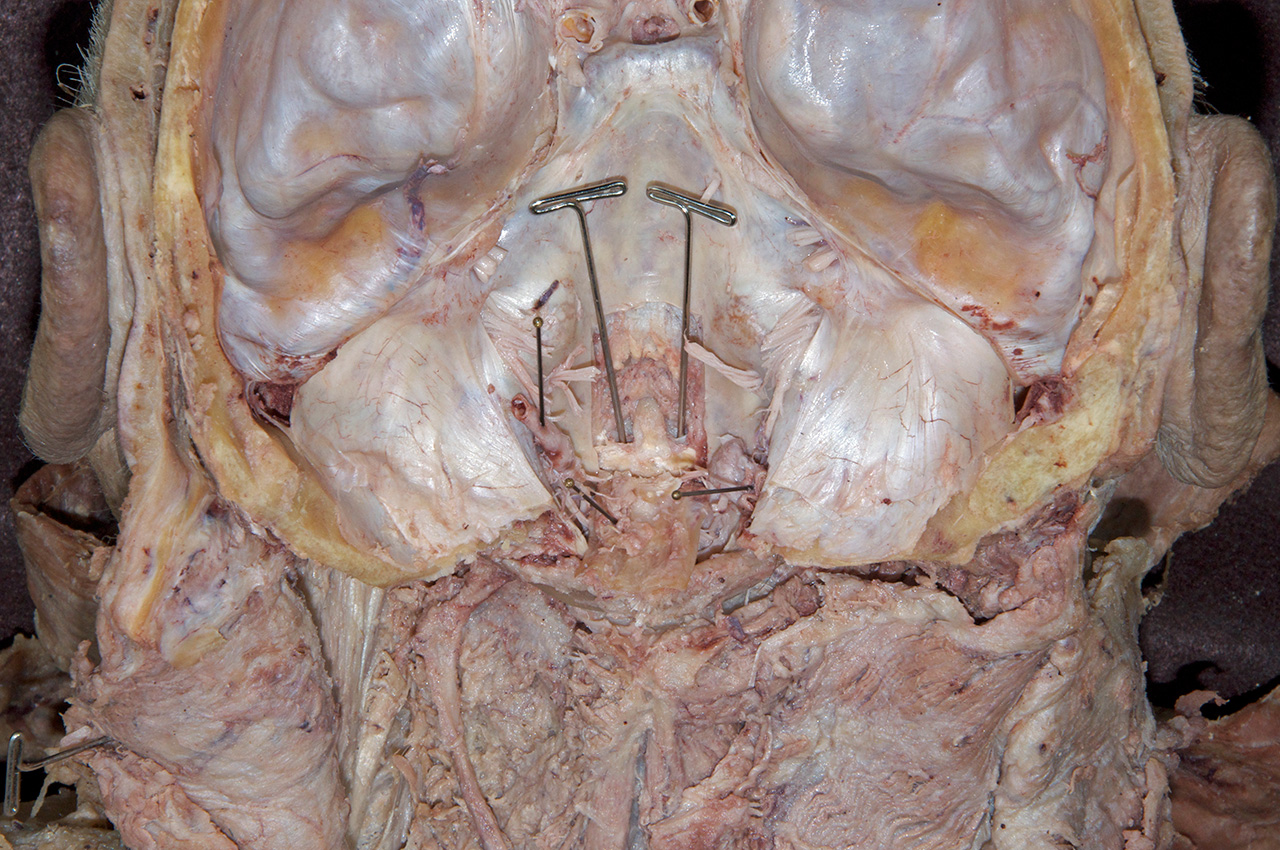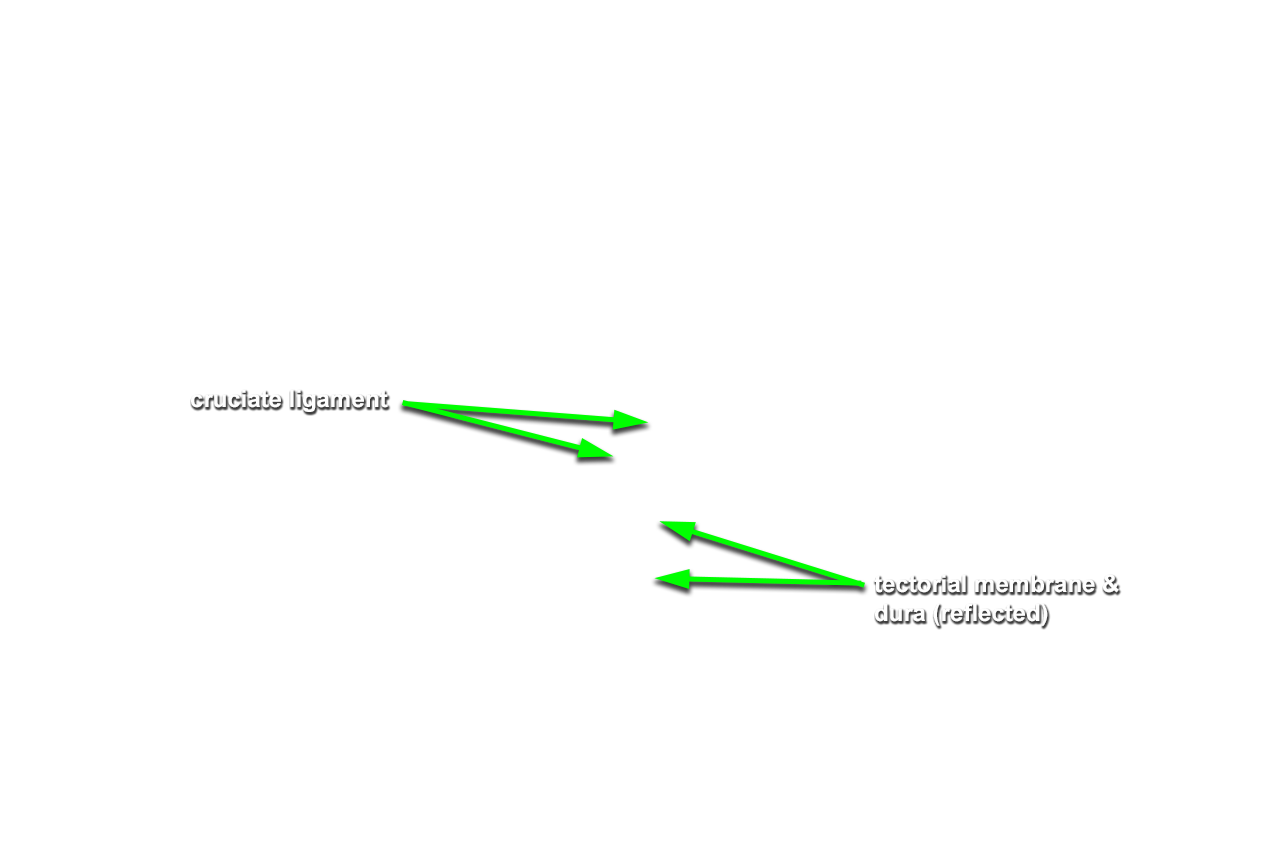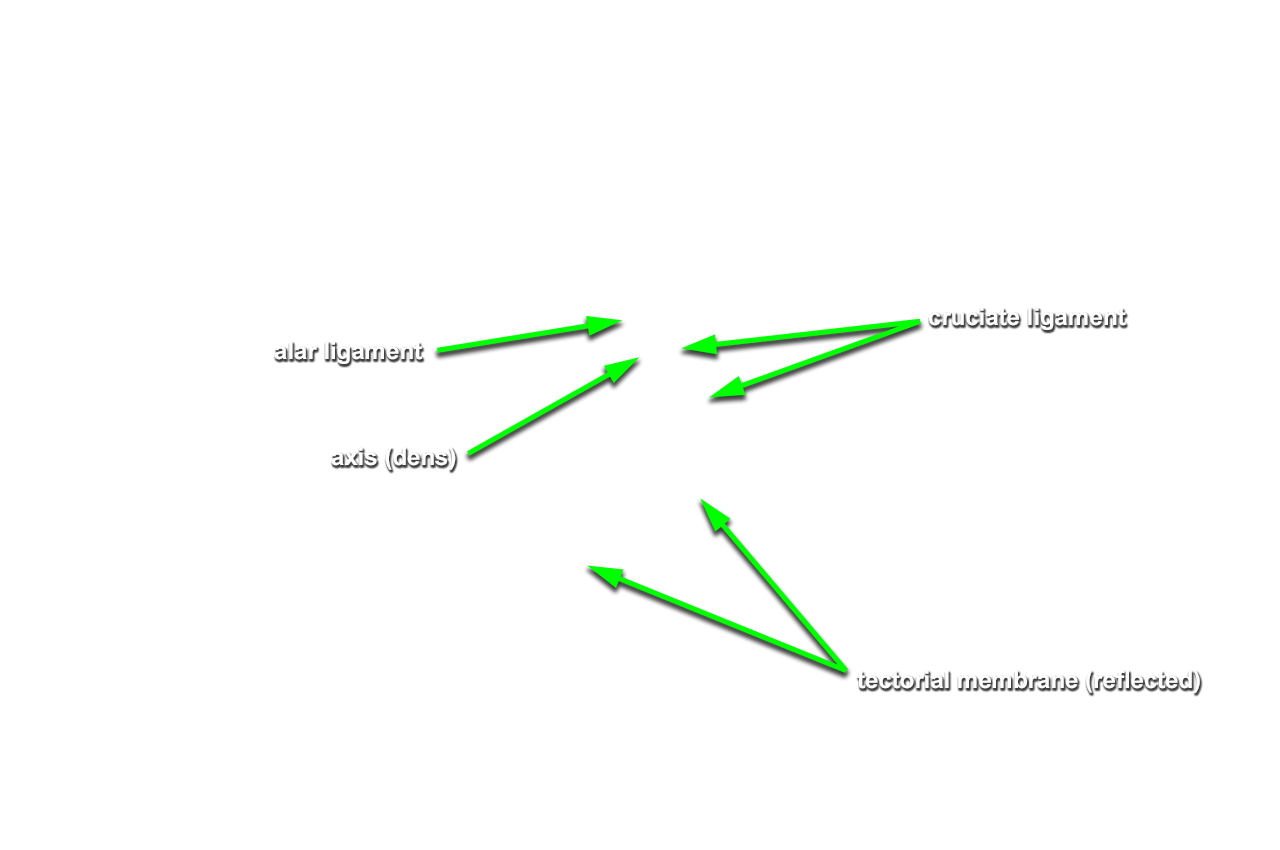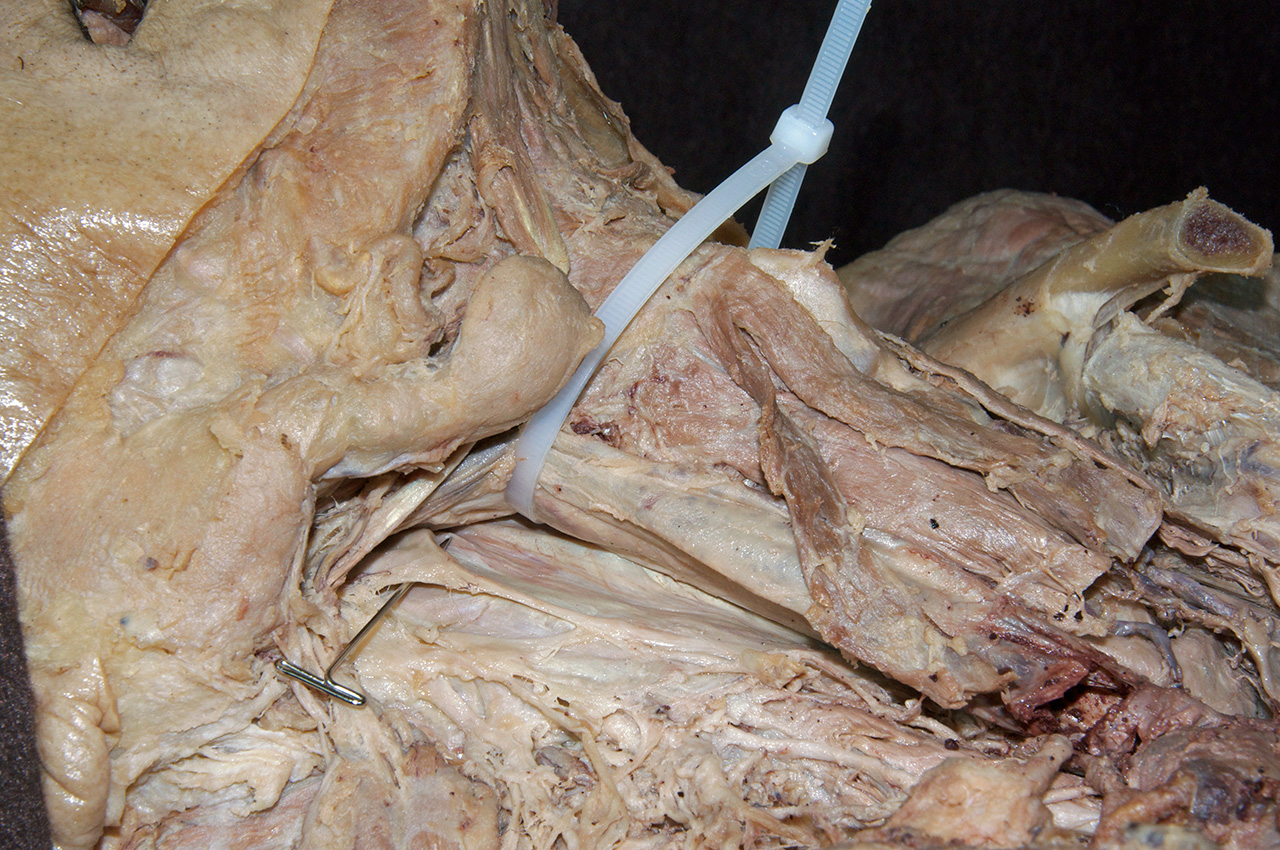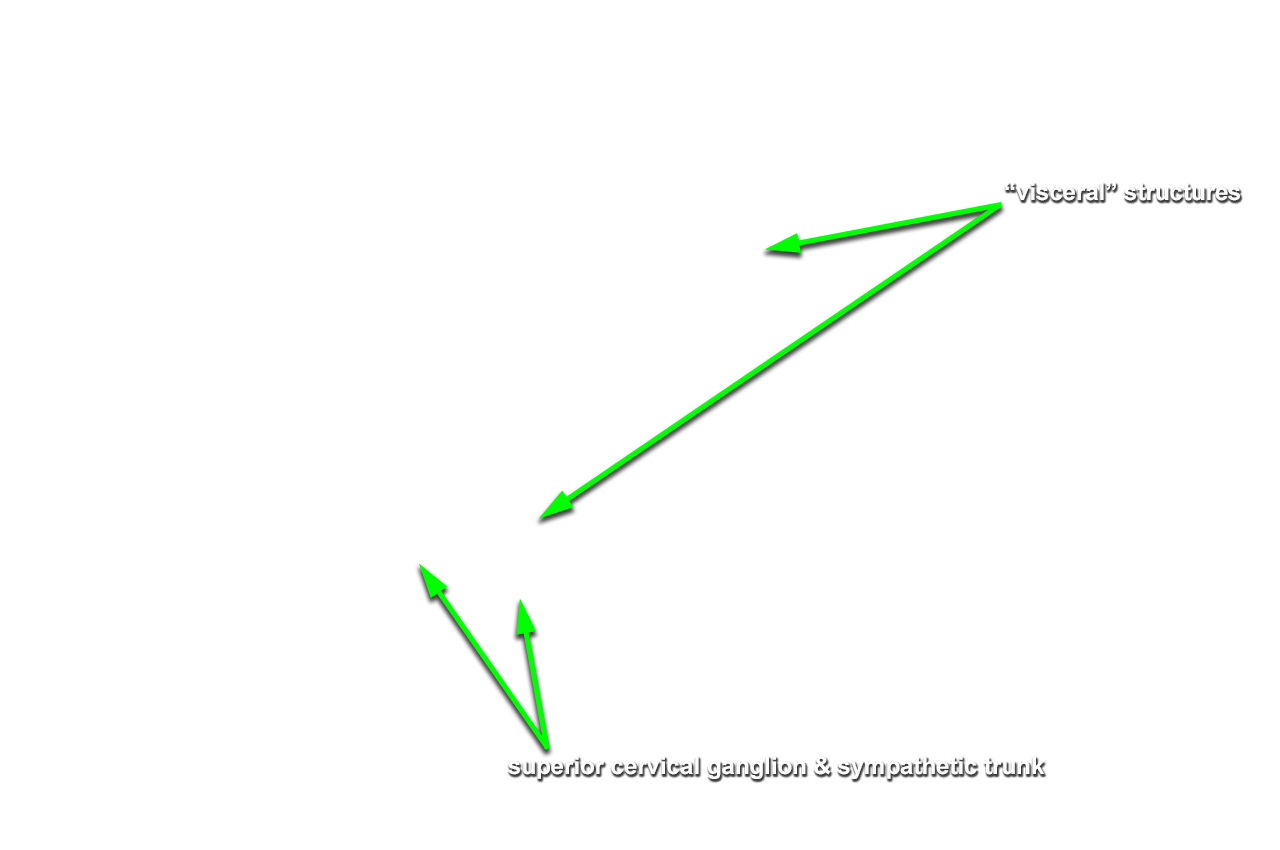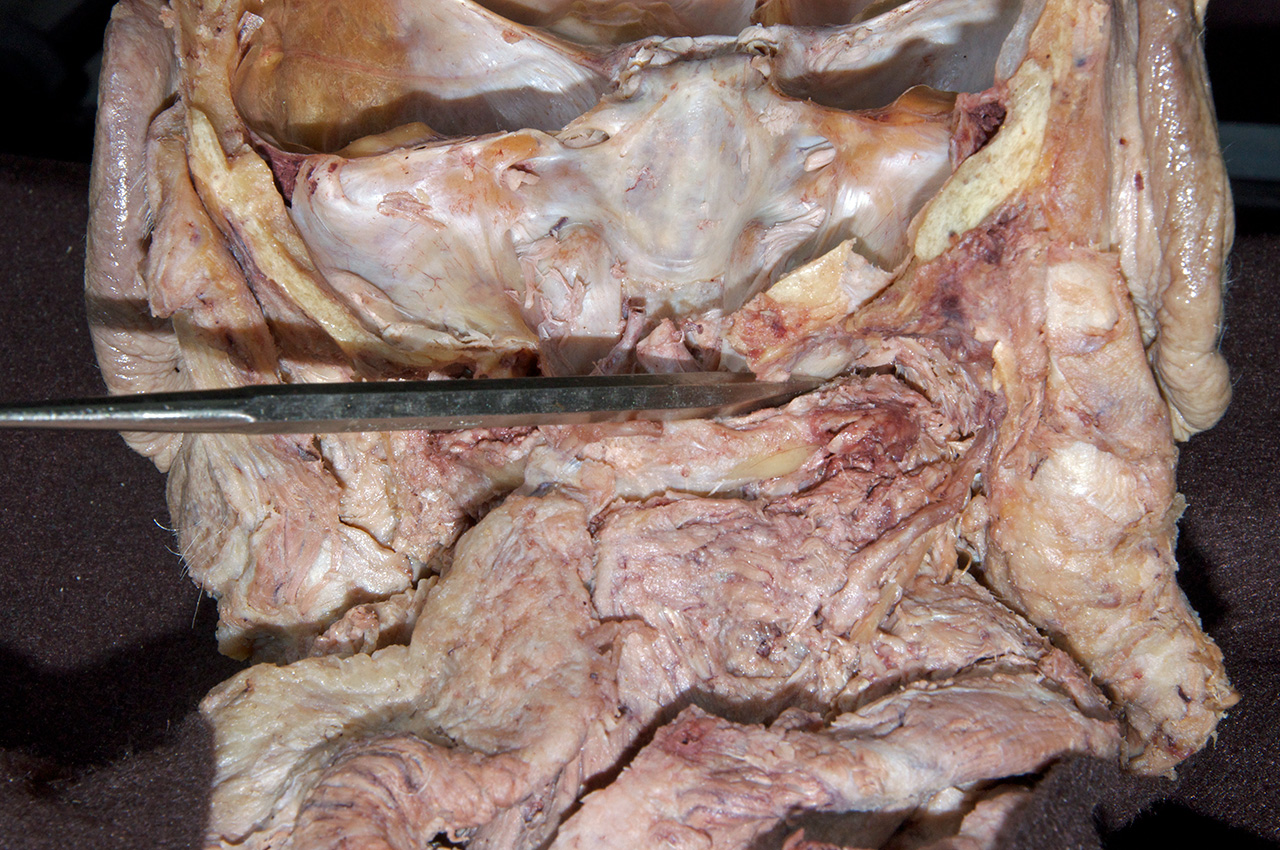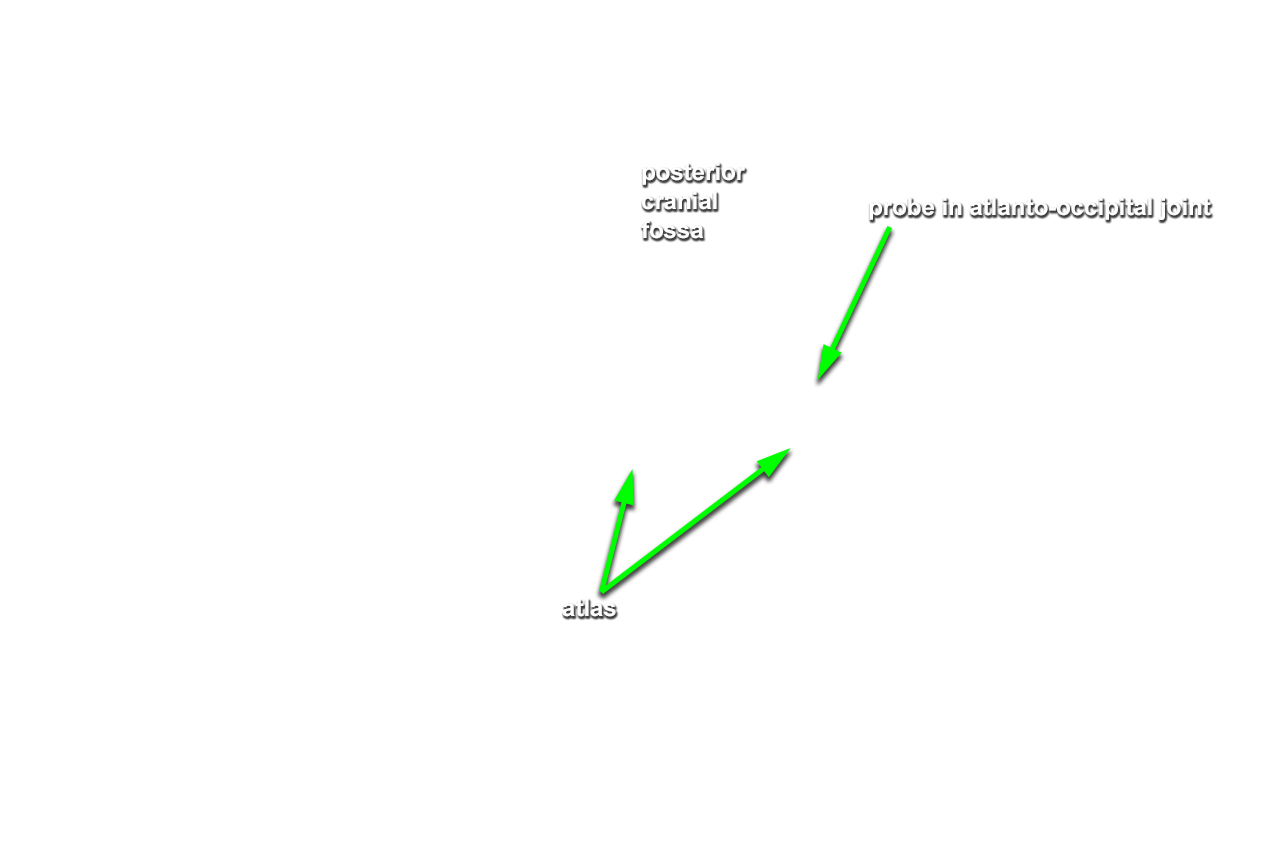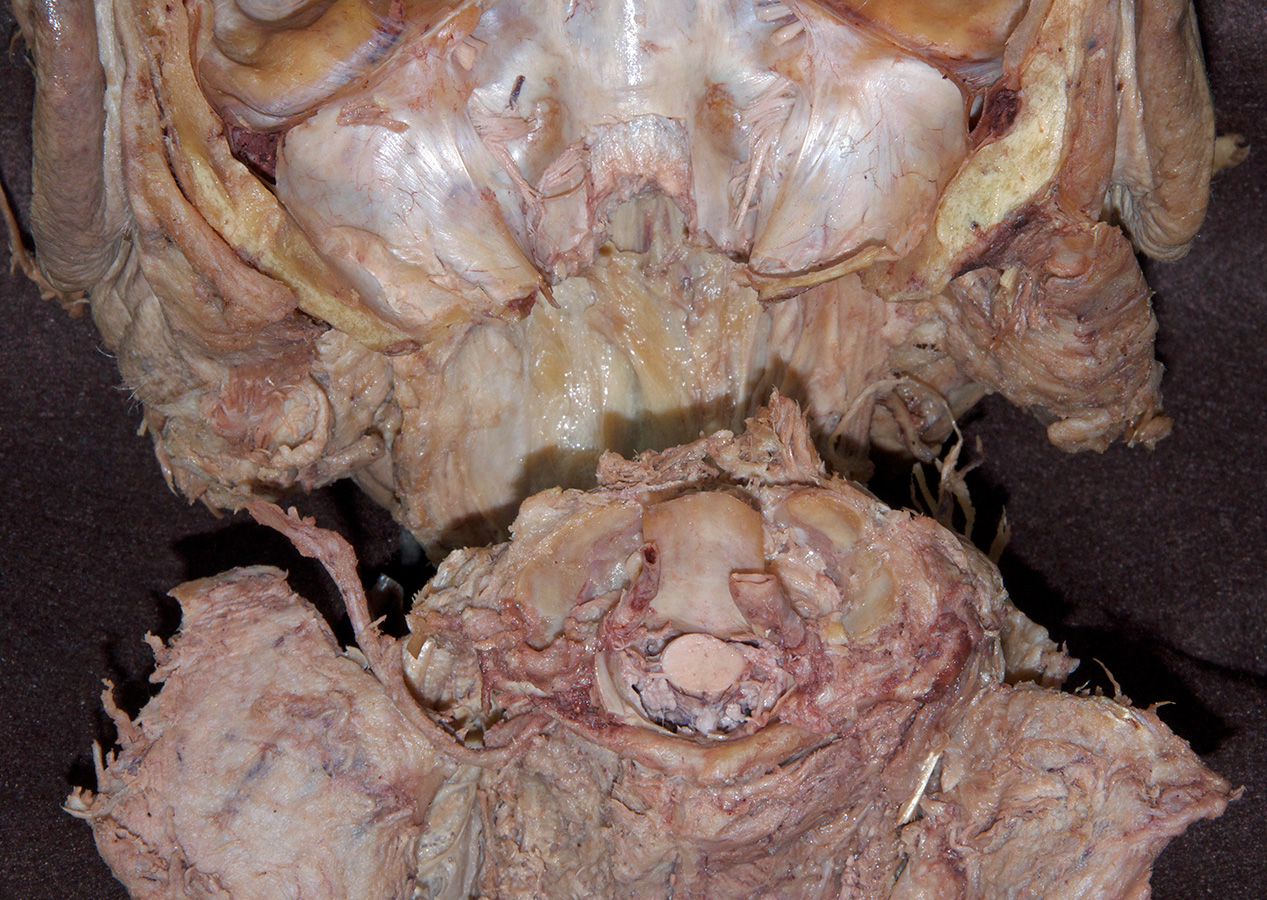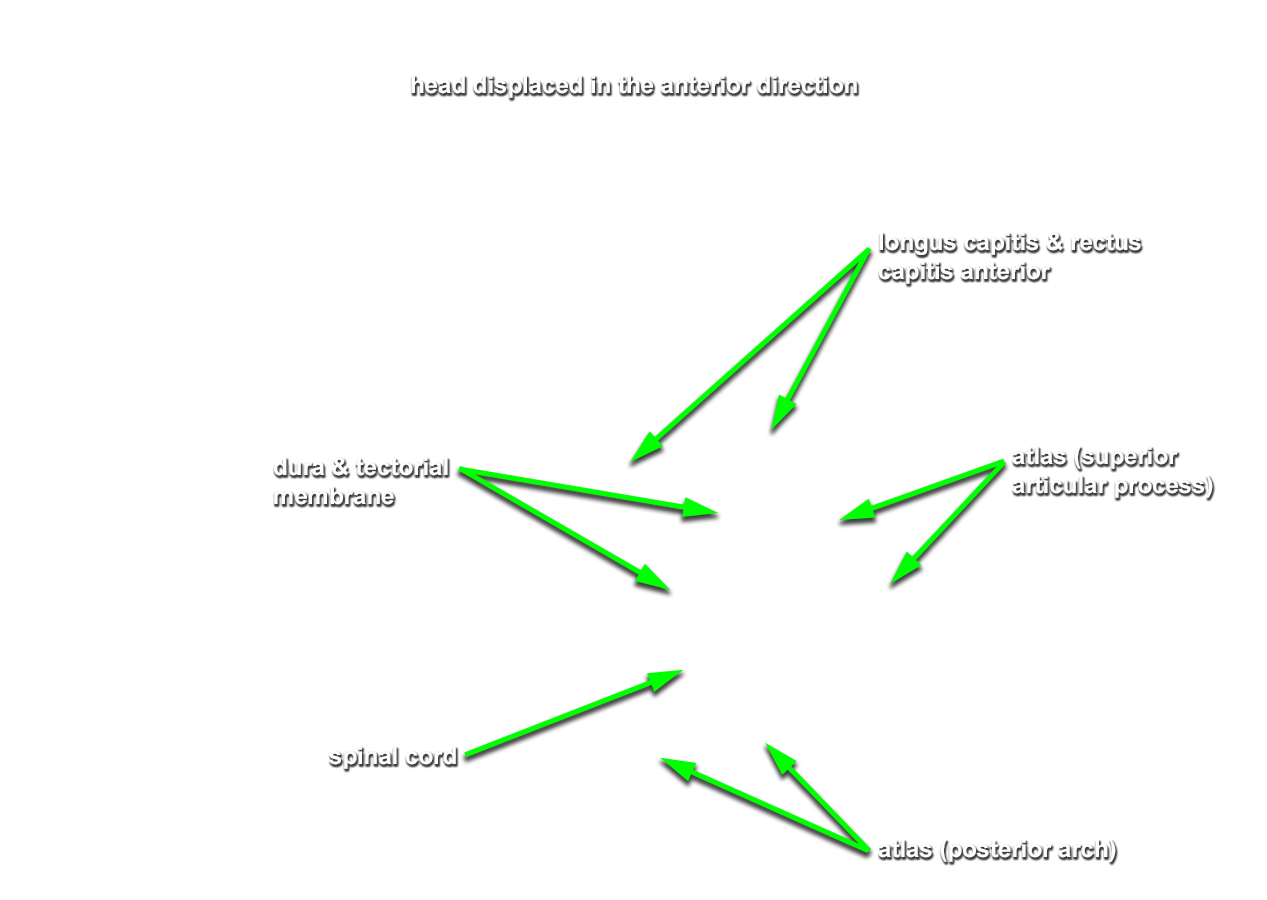Before proceeding with the nasal cavity and paranasal sinuses dissection, you must disarticulate the head from the cervical spine at the atlanto-occipital joints, and bisect the base of the skull and mandible.
- Place the cadaver in the prone position and palpate the location of the dens. (G 1.11;N 23;GI 2.23)
- Use a scalpel to cut the dura and tectorial membrane (they are usually fused in the cadaver) overlying the dens and reflect in the inferior direction.
- Identify and clean the cruciate ligament passing posterior to the dens.
- Separate the dens from the occipital bone by using a scalpel to cut the alar ligaments and superior longitudinal band of the cruciate ligament. (G 1.11;N 23;GI 2.24C)
- Place the cadaver in the supine position. Use your hands to separate the “visceral” structures (nerves, vessels, pharynx, esophagus and trachea) from the cervical spine and the muscles covered by the prevertebral fascia up to the base of the skull). (G 8.2;N 26;GI 45.25C) Leave the sympathetic trunk with the cervical spine on one side of the neck. Place a multi-purpose plastic tie around the visceral structures. Use the plastic tie to pull the “visceral” structures away from the cervical spine. Use a scalpel to cut the anterior muscles ( rectus capitis anterior and longus capitis) passing from the cervical spine to the base of the skull. (G 8.23A;N 30;GI 45.7B) Avoid cutting the internal carotid artery, internal jugular vein and cranial nerves IX, X, XI and XII.
- Return the cadaver to the prone position. Identify the atlanto-occipital joints. (G 1.10;N 22;GI 2.24C) Use a scalpel to cut the posterior aspect of the joint capsules. Use a chisel or wide probe to pry open the joint while cutting the lateral and anterior aspects of the joint capsule. Continue the cut laterally to sever the rectus capitis lateralis muscle. Use the tie to displace the “visceral” structures and finish cutting any remaining muscles (rectus capitis anterior and longus capitis) and the anterior atlanto-occipital membrane (continuation of the anterior longitudinal ligament). (G 8.23B;N 22;GI 2.26)
- You should now be able to displace the head and attached “visceral” structures in the anterior direction.

